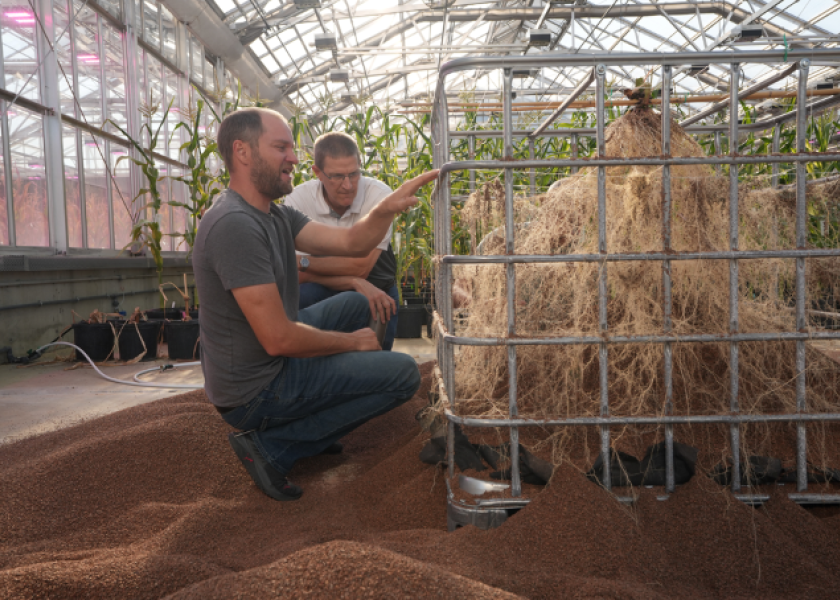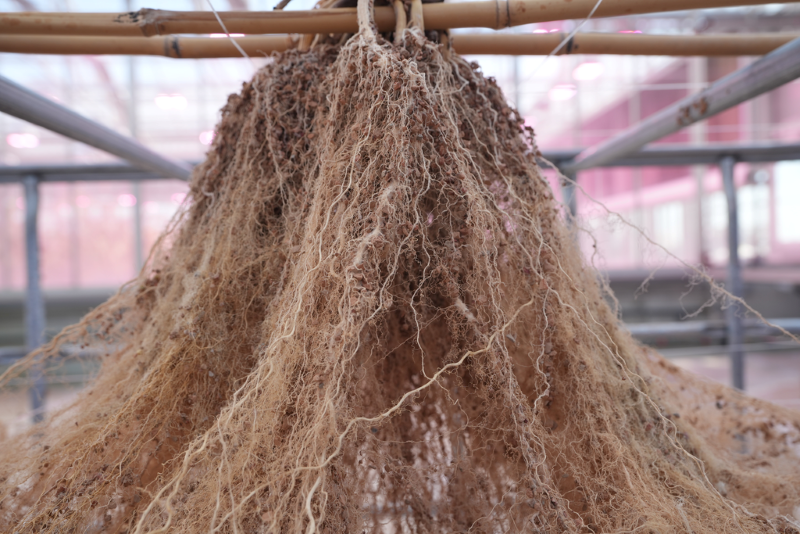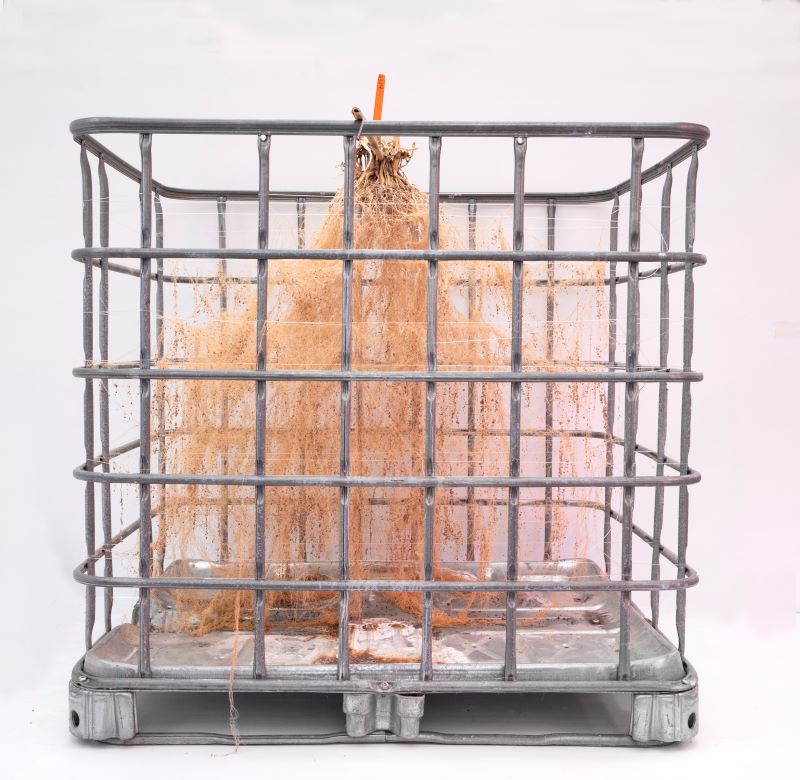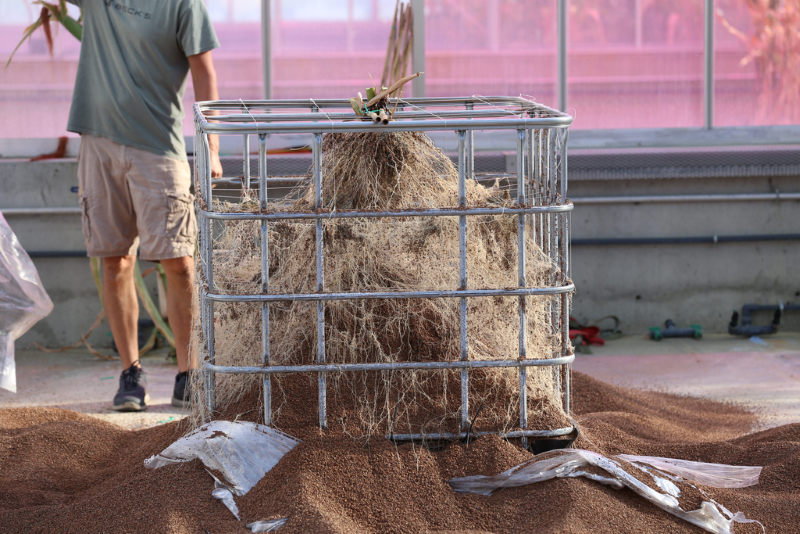Scientists say the New Frontier for Corn Research is Found in the Crop's Roots

For centuries, corn growers have focused almost entirely on what happens above ground in terms of plant health and yield. Today, scientists like Jim Schwartz are looking below ground – in the root zone – for insights to improve corn hybrids.
 "We’re digging deeper to provide farmers with more knowledge about the products they’re planting,” said Schwartz, director of research, agronomy and practical farm research (PFR) for Beck’s. “Our hope is that this research will help us identify correlations leading to causation in relation to root architecture and size and how it impacts variables like nitrogen utilization and population response.”
"We’re digging deeper to provide farmers with more knowledge about the products they’re planting,” said Schwartz, director of research, agronomy and practical farm research (PFR) for Beck’s. “Our hope is that this research will help us identify correlations leading to causation in relation to root architecture and size and how it impacts variables like nitrogen utilization and population response.”
Building Root Boxes
At Beck's headquarters in Atlanta, Ind., the research process hinges on what agronomists there call Root Reveal Research. The practice involves a unique protocol for growing single corn plants in their Corn Root Boxes. These empty chemical boxes are strung with fishing lines, shrink-wrapped, covered with boards, and filled with baseball field dry. Field dry is the dirt-like product groundskeepers put on baseball fields after a big rain to absorb residual moisture and speed up the drying process. Unlike soil, it doesn’t clump or stick to the roots.
Each cage contains an individual corn hybrid that is then watered and fed the same amount of nitrogen. Once the plants reach tassel, they are cut off from water and nutrients and left to dry. What they are left with is a visual demonstration of various root systems that may help identify differences farmers see in product performance relative to root architecture, fertilizer placement, stress tolerance, nitrogen placement and population management.


"We were fascinated by the differences,” said Schwartz. “You can see small differences when you do it this way and you learn, not only architecture, but you get a better classification around mass and the root types that exist."
Meta-Analysis of Roots
Since 2015, Beck’s has evaluated commercial hybrids in low-yielding plots that averaged less than 175 Bu./A. The meta-analysis data shows that of these hybrids, the vertical-rooted products have a +5.4 Bu/A. advantage over the mean of the trials. The eight years of meta-analysis data appear to validate their initial findings and conclusions around root architecture and their observations of the corn root boxes.

Beck’s robust plans for their Root Reveal Research in 2024 will help them determine if there is a causational link between root architecture and specific management variables. In addition to evaluating their entire corn lineup through their Corn Root Box protocol, they will continue their on-farm studies through their Practical Farm Research (PFR) program and in conjunction with the Crop Physiology Laboratory at the University of Illinois.
"I would say what we believe, and believe is the operative word right now, is that we can probably learn about stress tolerance, nitrogen timing and placement and then how planting populations impact a plant,” said Schwartz. “We're trying to find actual insights that are practical and that a farmer can engage with on his farm."
Does Root Architecture Matter?
The seed industry has dabbled in understanding the various angles at which roots grow and how that impacts growth. What the industry has not done is examine the correlation between root characteristics (specifically structure and volume) and nutrient management and then deliver a recommended product and nutrient plan to customers.
 In 2023, Beck’s – with the help of Fred Below, crop physiologist, and his team at the University of Illinois at Urbana-Champaign – set out to quantify data on root mass, size and architecture. Beck’s initiated two research projects with the University of Illinois to better understand how hybrid variation in root characteristics is influenced by population and how this variation impacts tolerance to stress and nitrogen uptake.
In 2023, Beck’s – with the help of Fred Below, crop physiologist, and his team at the University of Illinois at Urbana-Champaign – set out to quantify data on root mass, size and architecture. Beck’s initiated two research projects with the University of Illinois to better understand how hybrid variation in root characteristics is influenced by population and how this variation impacts tolerance to stress and nitrogen uptake.
“We see a shocking amount of rooting variation among commercial hybrids, which seems consistent in ours and Beck’s research,” Below said. “With our continuing research partnership, we hope to learn how to take advantage of this variation to manage yield-determining variables like nitrogen use or response to population and to allow for more management-specific recommendations to farmers.”
“We compare this to the ocean,” Schwartz added. “We've explored the earth quite a bit, but we haven't explored the ocean as much. This is like the ocean of the corn plant. We really don't know where this will take us, but what we do know is as we've started to dabble in this there's a lot to learn."
For more information visit: Beck's Root Reveal Research







